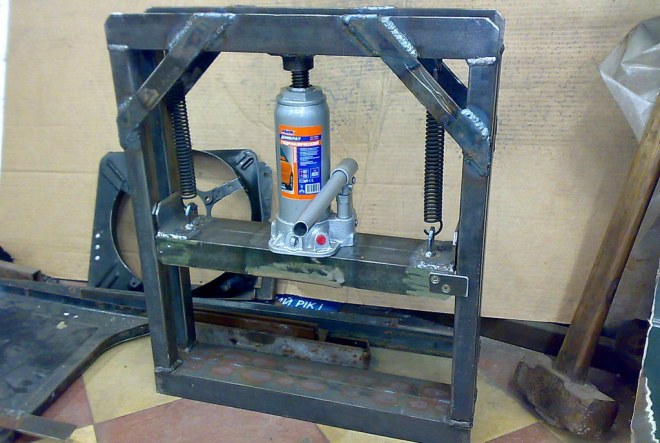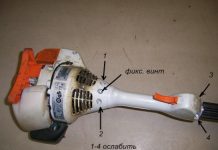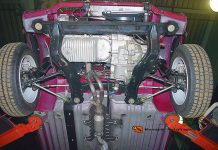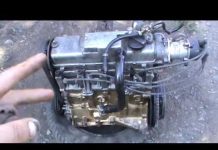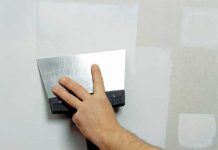In detail: a press for auto repair with your own hands from a real master for the site my.housecope.com.
When performing various works in a home workshop, it is often necessary to influence the workpieces by pressing. We will talk about how to make a hydraulic press with your own hands to perform such operations in this article.
Homemade hydraulic press
A hydraulic press is an equipment that is specially designed to process parts and workpieces by applying high pressure to them. Such a press works due to the pressure of the liquid acting on the elements of its structure.
Most hydraulic presses are designed with a vertical working cylinder, but there are also models in which it is located horizontally. Various press models can generate operating forces ranging from tens to several thousand tons.
Factory made hydraulic press option
The principle of operation of a hydraulic press is based on Pascal's law, known to us from a school physics course. The design of the press consists of two working chambers of different sizes or, as they are also called, cylinders. The principle of operation of a hydraulic press, to describe it in a few words, is as follows.
In the smaller of its cylinders, a high pressure of the working fluid is created, which is fed through the connecting channel into the chamber of a larger diameter and acts on the piston connected to the working tool. The latter exerts pressure on the workpiece, which is located on a rigid support in order to avoid its movement under its action. All hydraulic presses use special oils as a working fluid.
| Video (click to play). |
Working principle of a hydraulic press
The most widespread use of hydraulic presses is found in performing such operations on metal parts as stamping, forging, straightening, bending, extrusion of pipes and other profiles. In addition, with the help of such presses, briquetting, packaging and pressing of various materials is carried out (as a rule, a mini-press is used for this purpose).
The device of a hydraulic press makes it possible to actively use it both in enterprises for the production of rubber, plastic and wood products, and in other areas. The variety of functions and scopes of this equipment determine the existence of its various modifications. For example, on sale you can find a hydraulic bench press, a mini-press, a hydraulic floor press, a hydraulic manual press, presses with and without a pressure gauge.
The use of a hydraulic press in a garage or home workshop is quite common. It is possible to use such a press, which is notable for its small size, both when repairing a car, and for performing work of a different nature.
In particular, with the help of such compact equipment, it is possible to press out bearings or silent blocks, as well as press new parts in their place. In addition to automotive repair, the hydraulic press can be used to bend metal parts, create the required pressure when gluing surfaces, briquetting waste, to squeeze out oil and liquid. Factory equipment for this purpose (even a manual hydraulic press) costs a lot of money, and not everyone can buy it. Meanwhile, you can make such a press with your own hands, spending money only on the purchase of the necessary materials.
Using the press as a juicer
Remarkably, the design of a house-made hydraulic press can be immediately adapted to solve a specific problem with a specific part or workpiece. A self-made press does not take up much space; it will be enough to allocate a little space in a workshop or garage to place it. Detailed instructions on how to make a hydraulic press are given below. There is also a video on this topic at the end of the article.
Self-made hydraulic presses should not have too outstanding technical characteristics, it is quite enough that they develop an effort of 10–20 tons. This parameter of a homemade hydraulic press depends on what actions you intend to perform with it.
One of the most common and simple options for a homemade press
There are a number of other parameters that not only industrial, but also home-made household hydraulic presses correspond to:
- sizes;
- weight of equipment;
- piston stroke;
- the presence of a pressure gauge in the design of the press;
- characteristics of the bed used.
In home-made presses, the pressure in the working cylinder is usually created using a manual hydraulic pump, which can be either built into the design of such a device, or located separately from it. This design feature depends only on what equipment you choose to make such a device. It is very easy to make a hydraulic press with your own hands, if you take a bottle-type jack as the basis for its design. Such a jack, which is convenient, has a built-in hand pump in the design.
Bottle type hydraulic jack is great for use in a DIY hydraulic press
Before you consider purchasing a suitable jack for making your home hydraulic tool, it is important to decide what tasks you will be using it for. Both the design diagram of the manual hydraulic press and the effort that it will develop depends on this. The next step is to develop a drawing of a hydraulic press, which you are going to make with your own hands. You can, of course, find such a drawing on the Internet and even watch photos and videos of the process of making a press from a hydraulic jack with your own hands. But in this case, you will be faced with the need to adjust your existing devices to someone else's homemade press.
Manual hydraulic pump
The development of a blueprint for your future home-made press begins with deciding the question of how it will work. There are only two options here.
- The jack will be located at the bottom of the press - on its bed - and will push upwards.
- The jack is fixed in the upper part of the press structure and presses down accordingly.
However, when choosing a scheme for the operation of a home-made press, one should take into account the fact that for the main part of jacks produced by modern industry, the only correct location is with the pressing rod upwards, and it is simply not allowed to place them differently. That is why most often the first diagram of a hydraulic press is taken as a basis. The second option is used only in cases where it is required to make hydraulic equipment with your own hands for extruding bearings or bushings from individual assemblies and mechanisms.
Bottom Jack Option
The supporting element of any press, including home-made ones, is the bed, the development of the drawing of which should be approached as responsibly as possible. Structurally, the bed is a frame, inside of which there is a jack with a working tool that exerts pressure on the part or workpiece.
The type of bed can vary significantly depending on the purpose of the press.
The lower part of the bed - its base - is designed taking into account the fact that it must ensure high stability of the entire structure. When calculating the width of the internal opening of the frame of a home-made press, take into account both the dimensions of the parts and workpieces that will be processed on it, and the total dimensions of all the constituent elements of the future press.
Another bed option with a simpler base design for stability
When calculating the height of the inner opening of the frame, the following parameters are summed up: the height of the jack, the desired amount of free stroke of its rod, the thickness of the working body and the part that needs to be processed. If a homemade press is made according to the first scheme, then its design looks as follows: the jack is installed on the lower base, and the part is installed in the upper part of the frame; the force from the jack to the part is transmitted through its rod and a movable working platform moving along the guides in the side frame elements.

